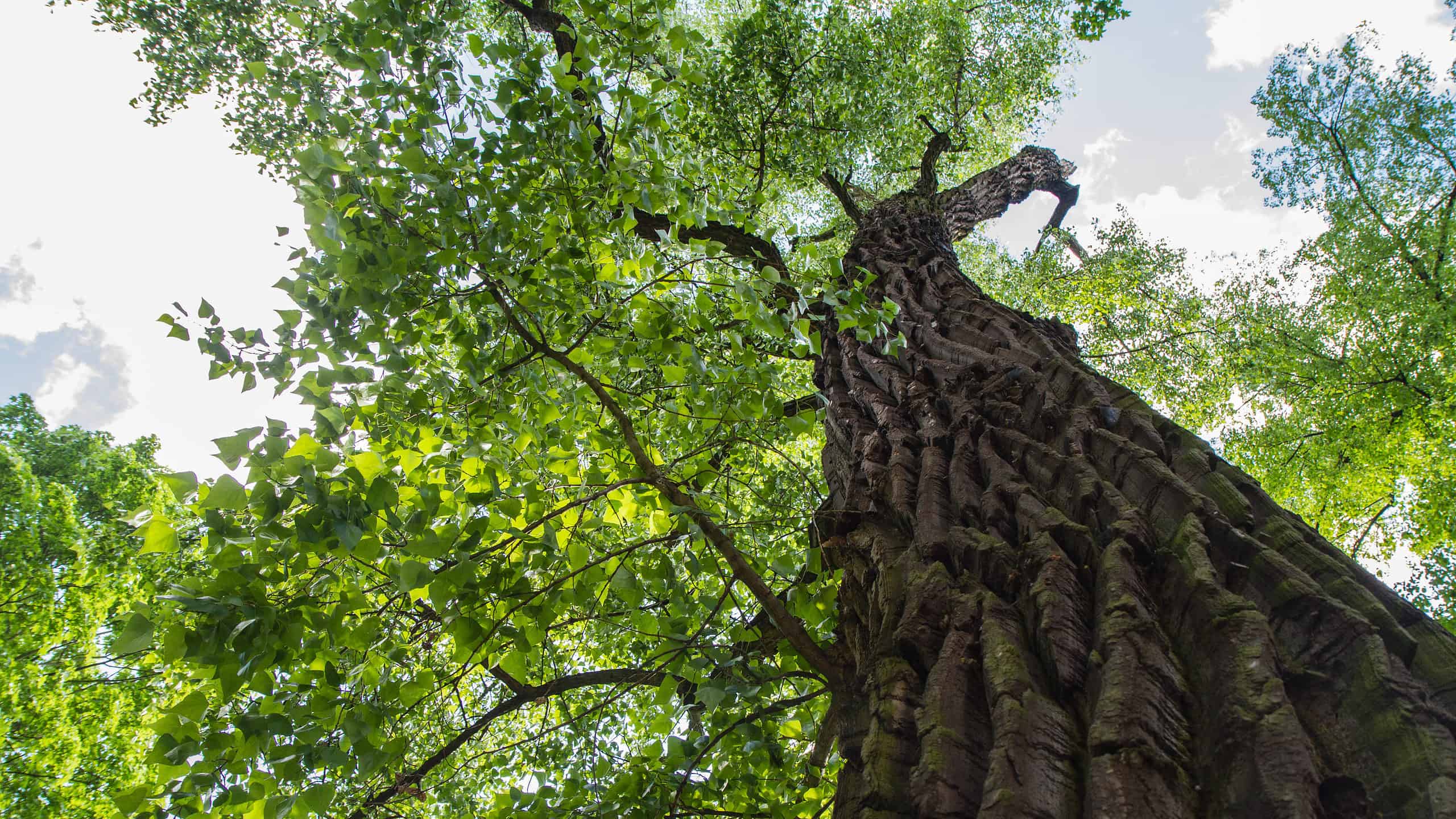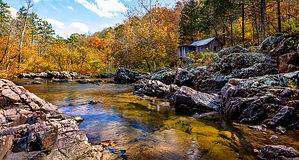It seems like a no-brainer when identifying a cottonwood tree. After all, who hasn’t seen the snow-like effect of the cottonwood trees releasing their seedlings in the breeze? And it’s likely that you or someone you know has a few cottonwood tree-related allergies.
But there are tips you can use to identify a cottonwood tree in the different seasons when they aren’t shedding those little white cotton puffs. There are pros and cons to having cottonwood trees on your property, so it’s good to know a few tips to help identify a cottonwood tree.

The snow-like cottonwood seeds are only one way to identify a cottonwood tree.
©JT8/Shutterstock.com
What Are Cottonwood Trees
Cottonwood trees are members of the poplar family in the genus Populus. Both the male and female species produce long clusters of small flowers called catkins, although the female is the only one that releases the familiar white seeds and cotton puffs. Around June, the catkins open and the white cotton-like seedlings start their journey, sometimes traveling great distances.
Cottonwoods are the fastest-growing trees in North America, adding up to six feet of length per year, up to 150 feet tall. They can match that in width given space. Cottonwoods generally have rough, grooved, greyish bark and glossy, triangle-shaped leaves.
Cottonwood trees prefer full sun and moist conditions, growing best in sandy or silty soil, although they can handle most soil conditions except heavy clay. Cottonwoods thrive in USDA plant hardiness Zones 2 through 9 and grow particularly well along rivers, lakes, or habitually wet areas like marshes.
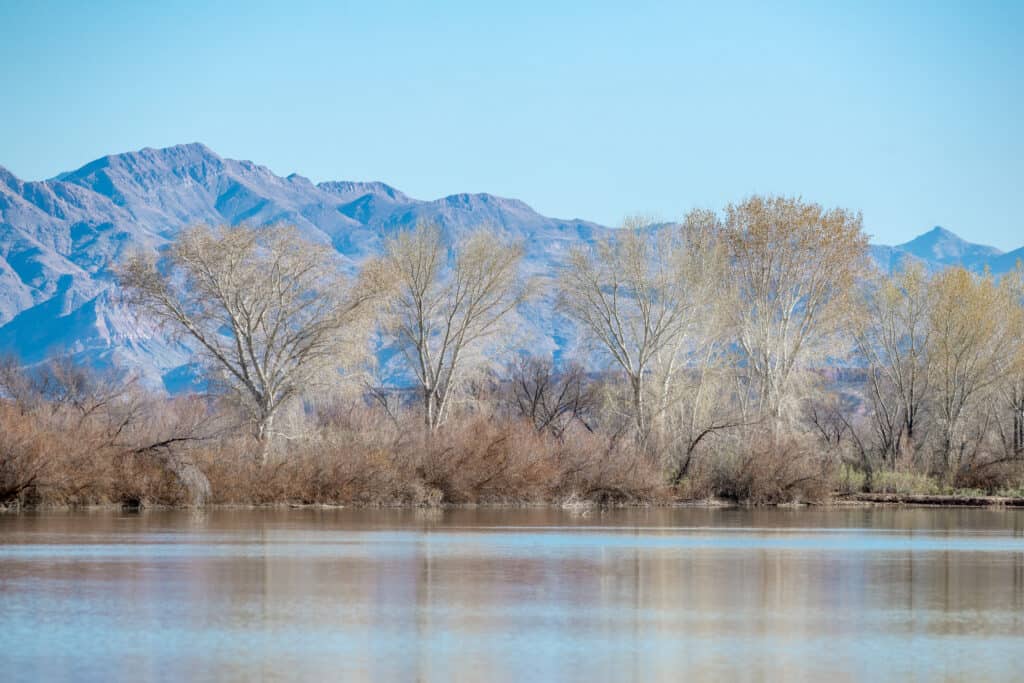
Cottonwood trees prefer moist, silty, sandy soil like that on the edges of rivers, lakes, and ponds.
©Dominic Gentilcore PhD/Shutterstock.com
Tips to Identify the Most Common Cottonwood Trees
There are three common varieties of cottonwood trees native to North America, most of which are in the U.S. Other than the obvious sight of the white, fragile, tufted seedlings of a cottonwood effortlessly floating in the air, there are other tips you can use to identify a cottonwood tree.
The three common subspecies of cottonwood trees are similar in some ways and different in others. They all have a tendency to grow tall with triangular, alternate leaves that grow on flattened leafstalks. The branches are thick, long, and uneven. The bark on cottonwood trees begins to be smooth and yellowish-green on young trees, turning a grayish brown with deep grooves as they age.
Catkins are present on all trees, although the females are the only ones producing flowers and releasing the notable white cotton seedlings. Here are tips to identify the different cottonwood subspecies further.
The Eastern Cottonwood
The eastern cottonwood (Populus deltoides) grows in the eastern, southwestern, and Great Plains states in the U.S. You can also find them in Ontario and Quebec in southeastern Canada. It is one of the largest hardwood trees on the continent and is among the top 100 most common trees in North America.
The males produce red-toned catkins, while the females produce yellowish-green versions. The females make the cotton while the males contribute the pollen. Some eastern cottonwoods have multi-stemmed trunks.
The leaf stalk is generally as long as the leaf, creating a drooping effect. The stalk flattens as it meets the leaf blade, sporting several wart-like glands at the joint. The leaf is long and features a straight or sometimes heart-shaped base, rounded teeth along the edges, ending in a pointy tip.
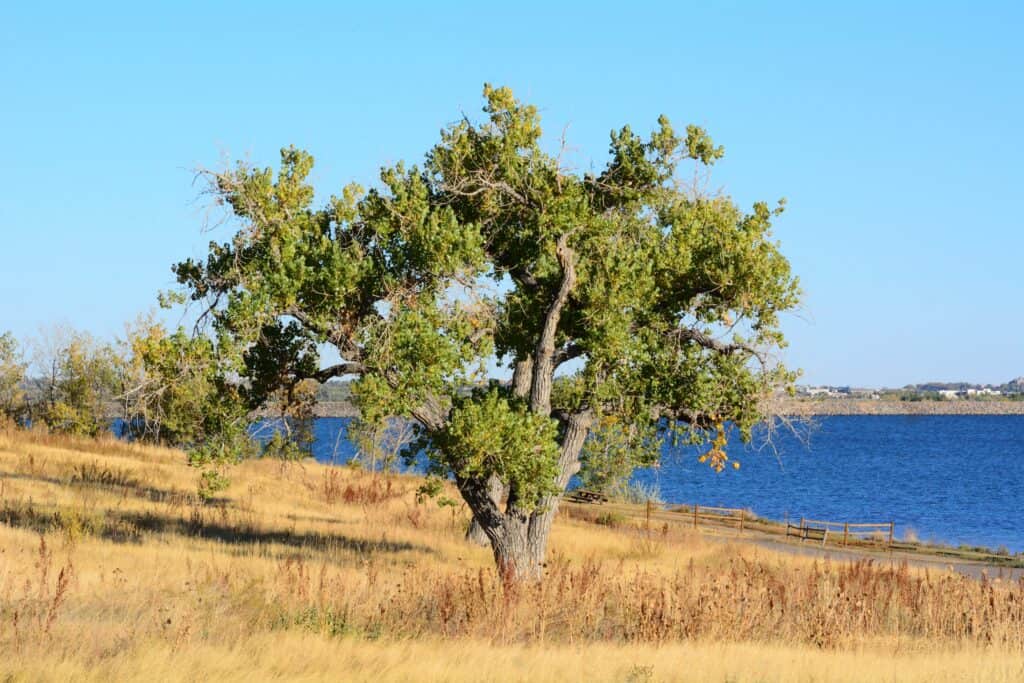
The Eastern cottonwood tree may have a multi-stemmed trunk system.
©Merrimon Crawford/Shutterstock.com
The Freemont Cottonwood
The Fremont cottonwood (Populus fremontii) grows from California east to Utah and Arizona and down into northwest Mexico. It is similar to the eastern cottonwood, differing only in the seed and pod structure and having fewer, yet larger serrations on its leaf edge.
The leaves are heart-shaped or triangular with white veins and turn from light green to golden yellow in the fall. Both genders produce red catkins, and Freemont’s fruit differs from the others in that it is light brown and egg-shaped, bursting into 3-4 sections to release seedlings. The Freemont cottonwood is also known as western cottonwood or Rio Grande cottonwood.
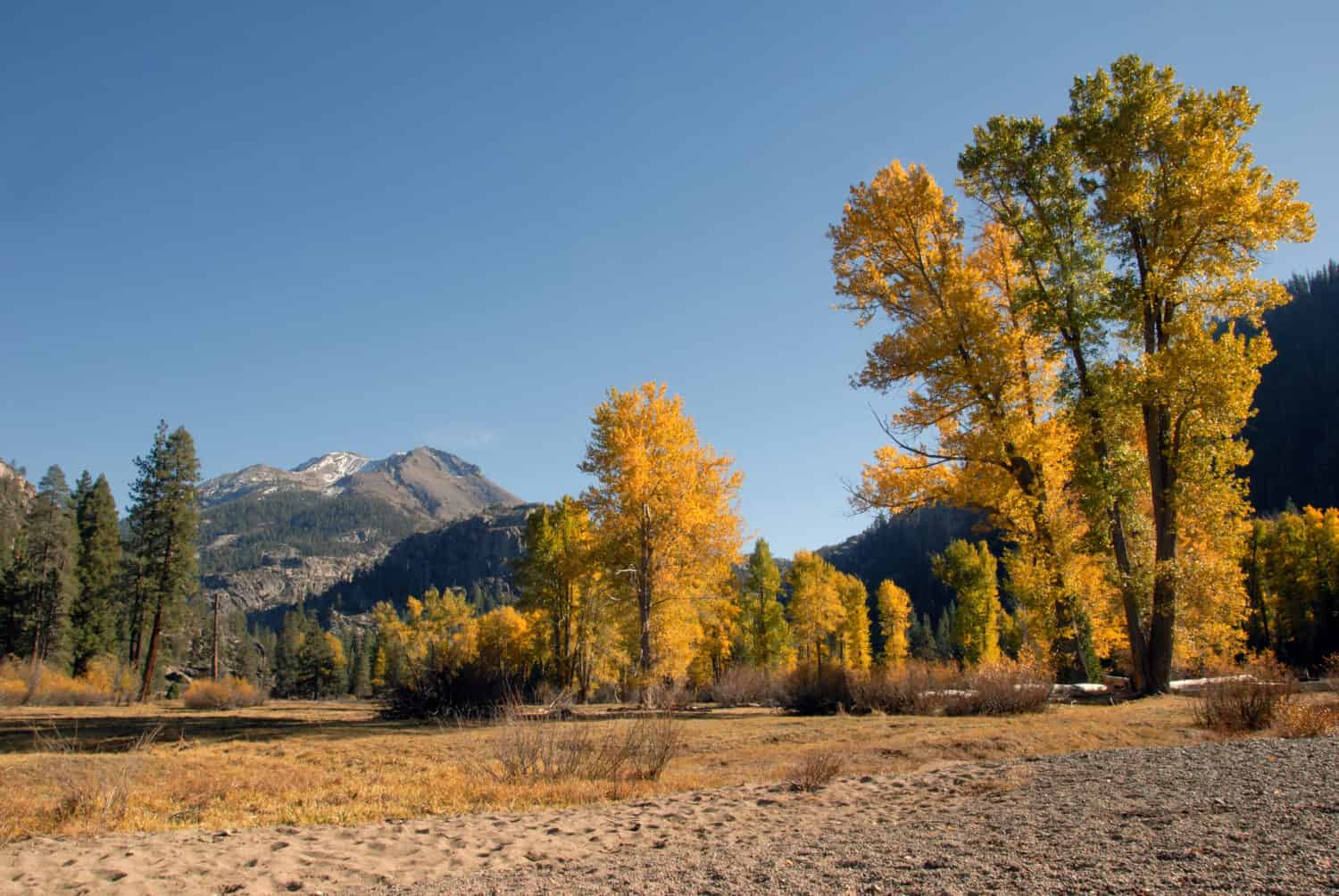
The Freemont cottonwood’s leaves turn from light green to golden yellow in the fall.
©Terrance Emerson/Shutterstock.com
The Black Cottonwood
The black cottonwood (Populus balsamifera), aka western balsam poplar (Populus trichocarpa), grows west of the Rocky Mountains, stretching as far north as Kodiak Island and then as far south as northern Baja California. It is the largest in the western U.S.
Unlike other cottonwoods, its leaves have an ovate shape and fine teeth. The leaves are dark, shiny green, and up to five inches long. Mature leaves can be blotchy brown or show rusty patches on the underside. The leaf tips are sharply pointed.
Both genders of black cottonwoods produce yellow catkins. The fruits are similar to the eastern cottonwoods, except they can have a hairy appearance. The tree’s branches have fragrant buds that are sticky due to resin, and the bark of the mature trees is deeply grooved.

The black cottonwood provides an ideal habitat for cavity nesters, like woodpeckers and owls.
©iStock.com/weisschr
History and Use of Cottonwood Trees
Initially, the presence of large cottonwood trees were landmarks for travelers and an indicator of nearby available water. Native Americans living in the plains used all parts of the cottonwood tree for their subsistence needs. The roots provided for both animal and human food. The bark contains salicin, which they used in herbal treatments as a pain reliever. The wood was available for construction, fires, and carving dugout canoes.
Today, cottonwood trees have many uses. The wood is easy to manipulate and carve for use by artisan makers. But that same trait allows the wood to warp and shrink. Today, you can find cottonwood lumber used in less permanent items like pallets, crates, baskets, boxes, and traditional kite frames. The trees are valuable in natural settings as a windbreak or natural habitat for various wildlife. Additionally, the cottonwood pulp is a popular choice in high-grade book and magazine paper.

Native Americans used cottonwood trees to make dugout canoes.
©Jason Rothe/Shutterstock.com
Cottonwood Pros
Cottonwood trees are beneficial in the right conditions and under certain circumstances. They can be visually stunning in fall, with their leaves turning to shades of gold. The leaves have flat stems, making them unique in how they flip around, shimmer, and rustle in the breeze.
Planted in open spaces, cottonwood trees quickly fill in unplanted areas and grow into excellent shade trees. They are ideal for deterring soil erosion. So much so, that the U.S. Forest Service implements the use of cottonwoods to stabilize streambanks. The trees act as a natural waterway filtration system to reduce sedimentation. Cottonwoods are also ideal as fast-growing windbreaks and are great choices for wildlife preservation.

Cottonwood trees are recommended to help deter soil erosion around banks and streams.
©Urban Images/Shutterstock.com
Cottonwood Cons
We’ve already mentioned some of the negative aspects of cottonwood trees. Their seedlings can be a nuisance, depending on what angle you’re coming from. Those light, far-traveling cotton puffs frequently clog up vents, filters, and screens and can quickly coat pools, fountains, and birdbaths.
Because the trees grow quickly, the branches can be brittle and frequently can not withstand strong winds, making them dangerous in populated areas. The cottonwood tree’s root systems are shallow. It helps them thrive in floodplains, but those same moisture-seeking roots also damage drain lines, sewer pipes, and septic systems. They may even uproot sidewalk and driveway slabs. Cottonwood trees flourish in open spaces away from residential or commercial properties.
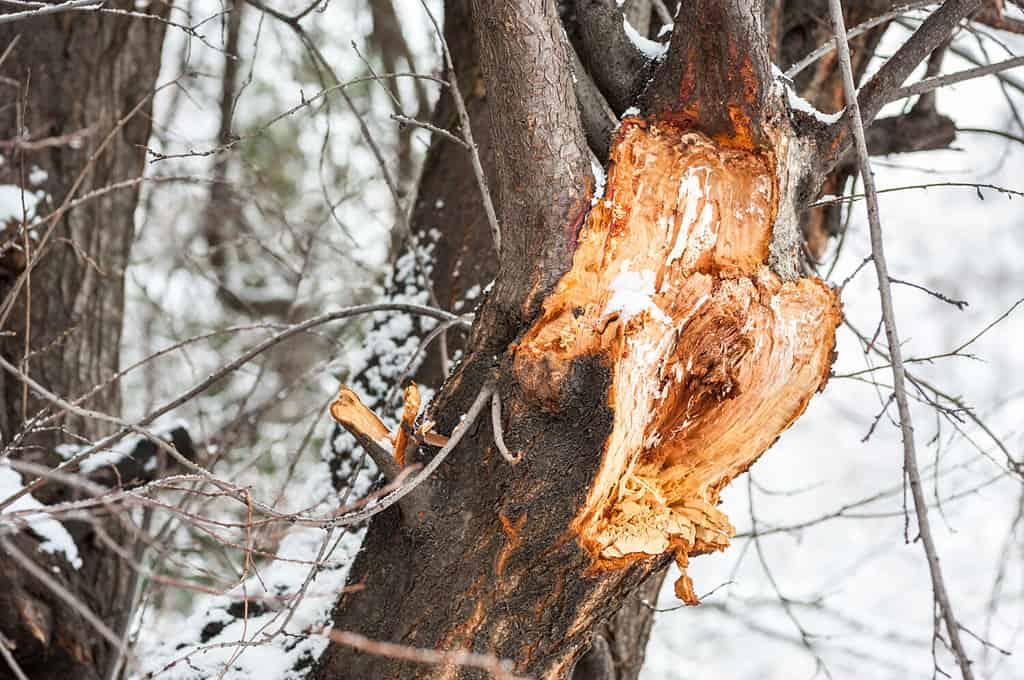
Cottonwoods are dangerous near residential properties due to their fragile branches and easy breakability.
©Srdjan Randjelovic/Shutterstock.com
Thank you for reading! Have some feedback for us? Contact the AZ Animals editorial team.

